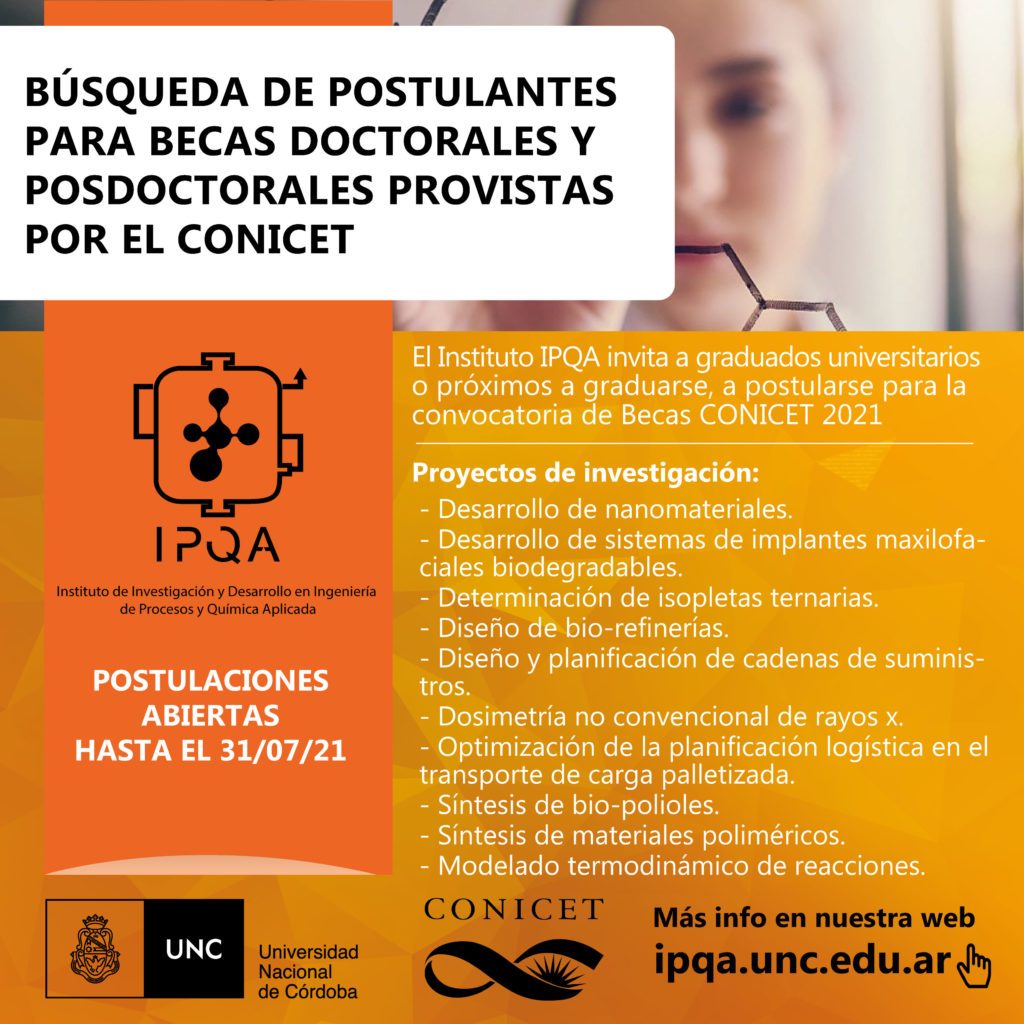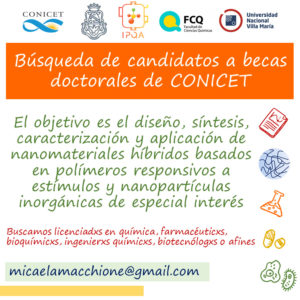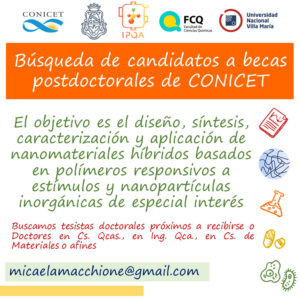
This space is intended to disseminate calls for doctoral and postdoctoral scholarships that may be of interest to students or individuals who wish to join our institute in one of our current research and work lines.
Projects that need doctoral fellows:

Topic: Nanotechnology is a field of applied sciences focused on the design, synthesis, characterization, and application of materials and devices on the nanometric scale. The application of nanotechnology to medicine, nanomedicine, represents the new scenario in which the pharmaceutical and biotechnological industries are constantly evolving. Recently, nanomedicine has advanced to combine tracking and monitoring techniques with the treatment of a pathology, an approach called theranostics. Thus, a promising approach is the preparation of multicomponent nanosystems, also known as nanoarchitectonics. In these systems, the main actors are not the individual nanoparticles but their interactions, which lead to the emergence of extraordinary properties especially valuable for biomedical applications. Among the wide range of nanoarchitectonics, inorganic-polymeric hybrid nanomaterials possess the ideal requirements for their application as theranostics. In this context, the general objective of this project is the development of pharmaceutical formulations for therapeutic and/or diagnostic purposes for various human pathologies. In particular, it proposes the design, synthesis, characterization, and application of hybrid nanomaterials based on stimuli-responsive polymers and inorganic nanoparticles of special interest, synergistically combining the properties of the individual materials. The developed nanomaterials must be able to act as therapeutic agents themselves, deliver and release drugs at specific sites, and/or allow ...

Topic: The interaction of different materials with high-energy photons can be used to quantify the energy absorbed per unit mass of a material, known as dose. This measurement is crucial to ensure that radiotherapy treatments are effective and that damage to tissues is achieved with minimal effect on healthy tissues. There are different ways to quantify the absorbed dose when exposed to a beam of photons or high-energy particles, including deterministic calculation tools, stochastic simulation, point determination elements like ionization chambers, or systems designed to respond quantitatively to the absorbed dose. The latter have evolved in recent decades by incorporating inorganic solutions that oxidize upon radiation exposure, polymeric systems where polymerization is induced by irradiation beams, and the incorporation of metallic nanoparticles to allow simultaneous detection and dosimetry, known as theranostics. In this context, the project proposes to study the design of materials that combine the use of polymeric systems, inorganic materials, and nanoparticles to obtain integral X-ray dosimetric systems capable of quantifying the 3D dose distribution. It aims to optimize currently used materials known as polymer gel dosimeters for radiotherapy clinical applications and design novel materials that combine nanoparticles of different metals such as gold, silver, and gadolinium for ...
Topic: Enhanced Oil Recovery (EOR) is a highly important topic that responds to a global demand for energy resources. Currently, only around 30% of hydrocarbon reserves are extracted, indicating a clear and concrete need to improve the utilization and lifespan of reservoirs. Oil recovery is defined as primary, secondary, and tertiary recovery, involving different technologies that allow greater oil extraction at a higher cost. Among them, tertiary recovery aims to extract oil immobilized by capillary or viscous forces, which currently accounts for around 3 million barrels of oil per day. There are various options for tertiary EOR that combine existing technologies with innovative methods such as the use of CO2, polymers, surfactants, among others. The most commonly used polymers for this purpose are partially hydrolyzed polyacrylamides (HPAM) and, to a lesser extent, polyacrylates. However, these materials are not stable at high temperatures or high salt concentrations, as found in most oil fields. Therefore, the design of suitable polymers to improve the rheological and interfacial tension properties of the displacement fluid in oil reservoirs represents a constant challenge for chemists and engineers. The general objective of this project is to obtain various polymeric materials with potential application in EOR. Specifically, the ...
Projects that need postdoctoral fellows:

Topic: Nanotechnology is a field of applied sciences focused on the design, synthesis, characterization, and application of materials and devices on the nanometric scale. The application of nanotechnology to medicine, nanomedicine, represents the new scenario in which the pharmaceutical and biotechnological industries are constantly evolving. Recently, nanomedicine has advanced to combine tracking and monitoring techniques with the treatment of a pathology, an approach called theranostics. Thus, a promising approach is the preparation of multicomponent nanosystems, also known as nanoarchitectonics. In these systems, the main actors are not the individual nanoparticles but their interactions, which lead to the emergence of extraordinary properties especially valuable for biomedical applications. Among the wide range of nanoarchitectonics, inorganic-polymeric hybrid nanomaterials possess the ideal requirements for their application as theranostics. In this context, the general objective of this project is the development of pharmaceutical formulations for therapeutic and/or diagnostic purposes for various human pathologies. In particular, it proposes the design, synthesis, characterization, and application of hybrid nanomaterials based on stimuli-responsive polymers and inorganic nanoparticles of special interest, synergistically combining the properties of the individual materials. The developed nanomaterials must be able to act as therapeutic agents themselves, deliver and release drugs at specific sites, and/or allow their monitoring within the organism. This work plan is framed within an active line of research (initiated in 2010) focused on the design, development, and study of properties/applications of hybrid nanomaterials whose organic portion corresponds to a polymeric material. Profile: We are looking for doctoral students about to graduate or Doctors in Chemical Sciences, Chemical Engineering, Materials Science, or related fields, interested in applying for CONICET postdoctoral fellowships. Contact: For inquiries, please contact Dr. Micaela Macchione (mmacchione@fcq.unc.edu.ar) or Dr. Miriam Strumia (mcs@fcq.unc.edu.ar) ...
